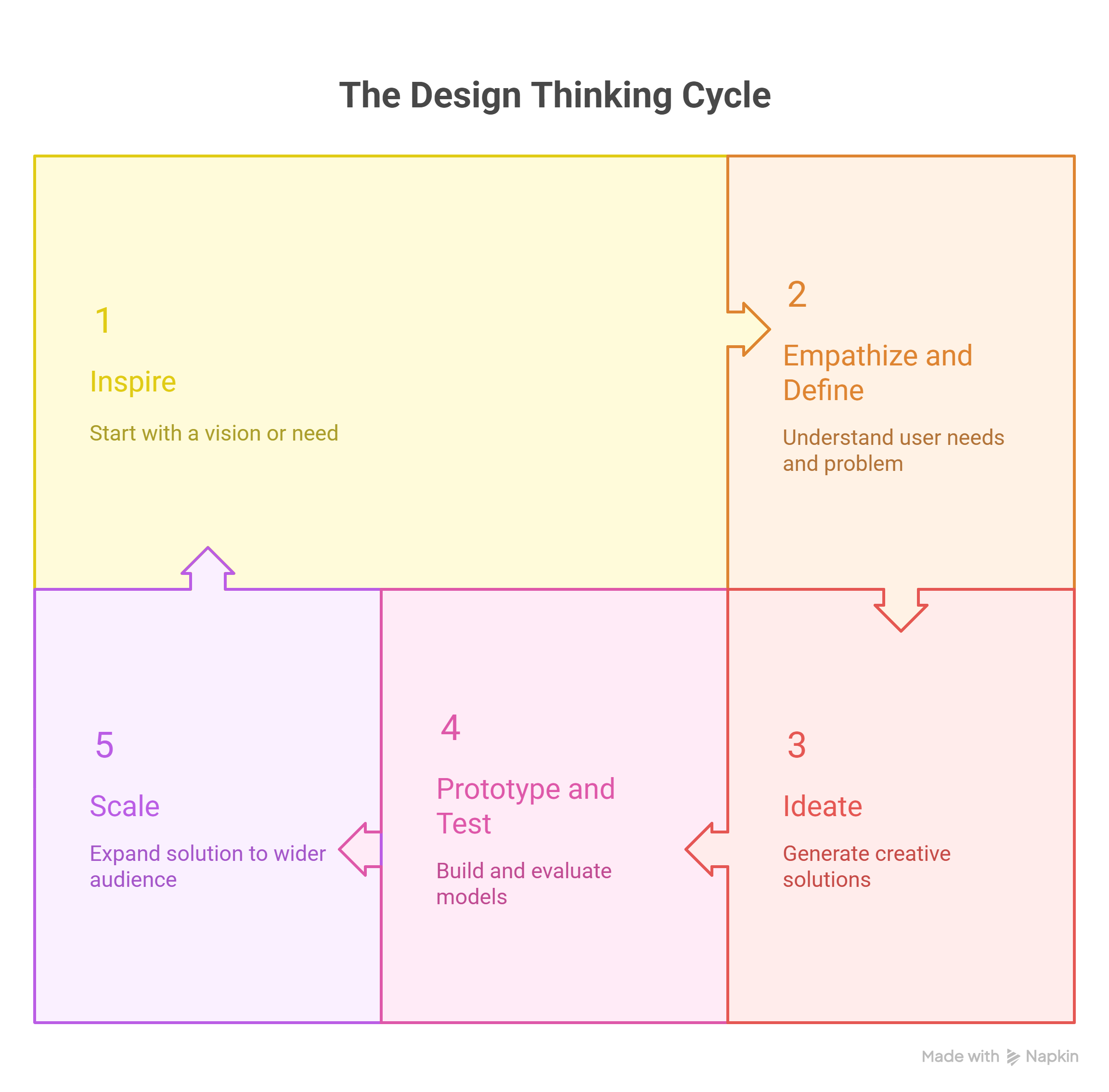Understanding the Design Thinking Model
The Design Thinking Model
The design thinking model is an antidote to the traditional, linear model of problem-solving. It is a simple and versatile model that can be used for service design, new product development, process improvement, and even personal problem-solving.
Key Stages of the Design Thinking Model
The model consists of five key stages:
1. Inspire The first major departure from the traditional model is that design thinking starts with inspiration, not an idea or a problem. The core question is "why to solve the problem?" rather than "how to solve the problem?".
Inspiration is driven by two main factors:
- Aspiration: Aspiring to do something better, such as Disney creating its theme parks or Netflix revolutionizing movie streaming.
- Desperation: A dire need or crisis, like the desperation that led to the birth of NASA and the space race.
A clear inspiration can galvanize a team and provide a clear objective, which is a pivotal role of leadership. For instance, Mahindra and Mahindra's inspiration to create a world-class Indian-made SUV led to the XUV 500 project.
2. Empathize and Define The second stage combines empathy and defining the problem. While empathy is the ability to proactively understand what people think and feel, it must be bounded.
Bounded empathy ensures that your solution is not only desirable to the customer but is also practical and viable for your business. This stage introduces two key boundary conditions:
- Technical Feasibility: This asks, "Can I do it?" It requires assessing whether the necessary technology and resources are available to implement the solution within a given time and budget. An example is a solar-powered car, which, while desirable to customers, is not yet technically feasible.
- Business Viability: This asks, "Does it make business sense?". The solution must be economically sensible and help the business save or make money. Startups that promise everything to customers without considering business viability often fail. Customers are happy to use services like quick commerce but will quickly switch if the company goes bankrupt, highlighting that desirability alone isn't enough.
In design thinking, ideas are not generated until after thoroughly understanding the customer and the business's own agenda, which is a significant shift from the traditional model.
3. Ideate After defining the problem with empathy and feasibility in mind, the focus shifts to ideation. The core principle here is that quantity leads to quality. You should aim to generate a large number of average ideas to eventually find a few good ones. Ideas are like Lego blocks; the more you have, the more creative combinations you can build.
4. Prototype and Test Prototyping involves creating a model of the final idea to test it. The purpose is to build confidence that the idea will work in reality. Prototypes can be aesthetic (focused on appearance) or functional (focused on operation).
Prototyping should be a mindset of provisional attachment to an idea, not a full commitment. It's about being willing to make repeated small improvements, as exemplified by Sir James Dyson, who made over 5,000 prototypes for his bagless vacuum cleaner. Thomas Edison's quote, "Genius is 1% inspiration and 99% perspiration," also highlights the importance of this iterative process. The prototype is then tested with actual customers to gather feedback before moving forward.
5. Scale The final stage is scaling the solution. Innovation is not just about creativity; it's about the ability to scale a solution to a wider audience. Pablo Picasso is a prime example of an innovative artist who could scale his work, creating over 15,000 paintings in his lifetime. Scaling is the real litmus test of innovation.


No Comments